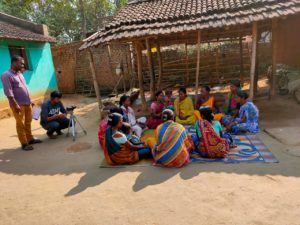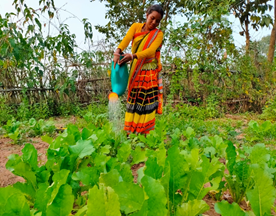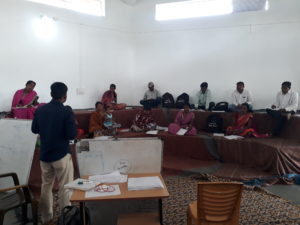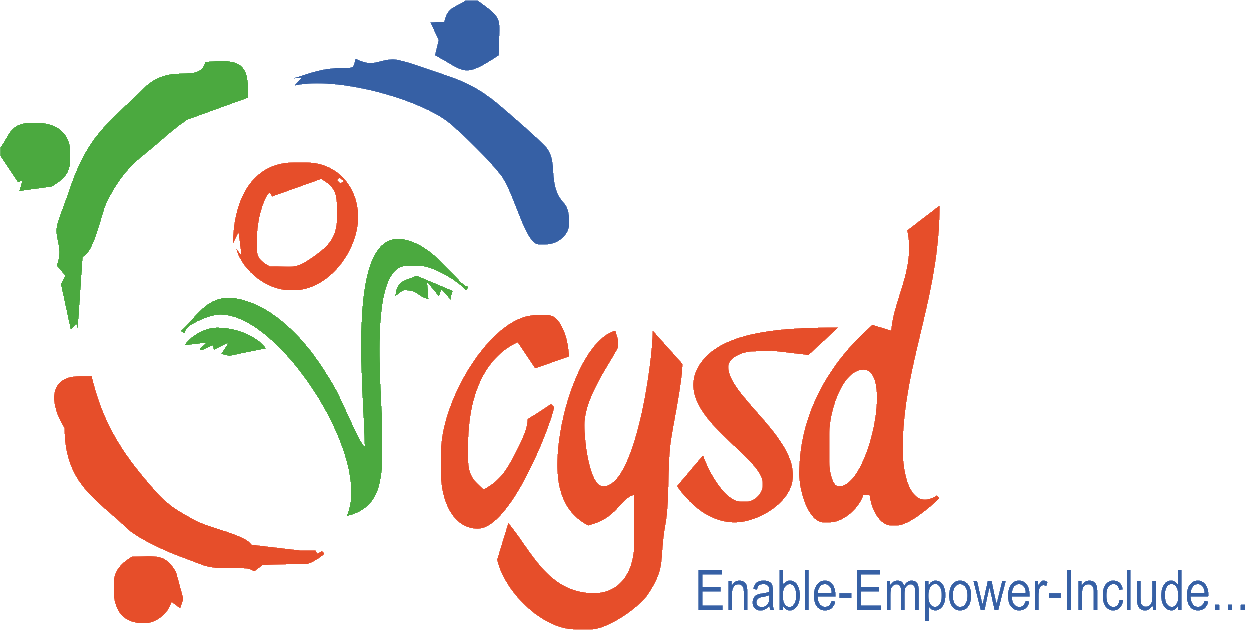Digital Platform enhances Nutritional Status & Social Well-being of Tribal Women
‘SAMVAD’ an innovative program of CYSD has been implemented in 174 villages to reach out 23231 women of both Keonjhar & Mayurbhanj districts of Odisha.
The intervention aims at maximizing penetration of knowledge and practices on Maternal, Infant and Young Child Nutrition (MIYCN), family planning and Nutrition Sensitive Agriculture (NSA) through participatory community video and mediated learning based extension platform for enhanced nutritional and social well-being of tribal women.
Recent Update:
 (A)With a view to enhance the exposure the Pregnant and Lactating mother (PLWs) and their male counterparts to SAMVAD led videos/films, the team has formulated a strategy to map a list of all the PLWs and married couples in all the project villages and screening the MIYCN videos regularly for better uptake of information. As a result, dissemination participation has increased from 30-40%.
(A)With a view to enhance the exposure the Pregnant and Lactating mother (PLWs) and their male counterparts to SAMVAD led videos/films, the team has formulated a strategy to map a list of all the PLWs and married couples in all the project villages and screening the MIYCN videos regularly for better uptake of information. As a result, dissemination participation has increased from 30-40%.
 (B)Winter is one of the best seasons to cultivate kitchen garden at the household level. So most of the women have undertaken kitchen gardening in their respective backyards choosing the best plant species for growing vegetable year the round to ensure supply of required vegetables to their families for consumption and supplementary nutrition purposes. The video disseminations greatly help the women to address the important aspects of an ‘Ideal Kitchen Garden’, like selection of right species, usages of compost for the nutrient supplement to soil and use of household wastewater for watering the plants.
(B)Winter is one of the best seasons to cultivate kitchen garden at the household level. So most of the women have undertaken kitchen gardening in their respective backyards choosing the best plant species for growing vegetable year the round to ensure supply of required vegetables to their families for consumption and supplementary nutrition purposes. The video disseminations greatly help the women to address the important aspects of an ‘Ideal Kitchen Garden’, like selection of right species, usages of compost for the nutrient supplement to soil and use of household wastewater for watering the plants.
(C)A two-day refresher-training programme on MIYCN and video dissemination was conducted for 22 Mediators to reorient them on the concepts of maternal, infant and young child health, practice of appropriate nutrition intake by prenatal and postnatal women; demonstration of all the functions of PICO Projector; and the preparatory steps for conducting the Video/Film dissemination.
The training was undertaken using various training methods including visual aids, demonstrations, group discussion and role-plays. At the concluding session, the participants’ knowledge base was assessed and accordingly individual future plan of actions were drawn by the participants.
